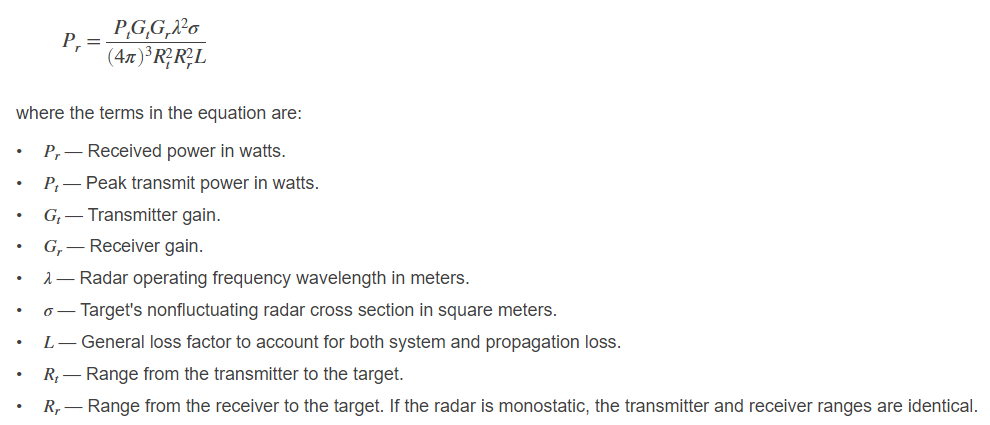Other Parts Discussed in Thread: DCA1000EVM
I am trying to estimate the radar cross section (RCS) for each range and angle bin after beamforming. To quickly summarize my processing:
- Collect raw data using DCA1000EVM
- Format raw samples into frames with complex int16 samples
- Perform 2D FFT
Perform Capon beamforming such that for a given range/Doppler bin and angle, t, the received power is P(t) = 1/[a(t)*inv(R_x)*a^H(t)]
- where R_x is the covariance of the range/Doppler bin across antennas, a(t) is the steering vector, and a^H(t) is its Hermitian transpose.
Now, I have a 2d array with dimension (n_range_bins x n_angle_bins) and I want to get the RCS for each of those.
In order to do that, I can use the following equation:
My questions/uncertainties are the following:
P_r: This is computed via beamforming. I am wondering though what units my computed answer is in? As mentioned earlier, I get complex int16 samples from the ADC and then perform the operations on the frame. Does this mean my measurements are in watts but scaled?
P_t: I believe this is 12 dBm or ~.0158 watts
G_r: This I believe this is set by the radar config and I have it set to 30 dB
G_t: I could not find this number.
Are the gains angle-dependent?
lambda: Should I pick the center frequency?
L: Can I ignore this term?
Thanks!



